You’ve got a tattoo. It’s fading. What do you do? Most people think it’s the result of improper aftercare, but that may not be true! Tattoos fade for many reasons, and there are ways to prevent this from happening.
Tattoos are permanent. This means that they should look vibrant and beautiful forever, or at least for many years. Unfortunately, this isn’t always the case when tattoos start to fade in color over time. While there can be a variety of reasons why tattoos may start to fade (e.g., age, tattoo ink quality) we will focus on what you can do to make your tattoo last longer.
Reasons Why Your Tattoo is Going to Fade
Not-so-tattoo friendly spot
You might have chosen a less-than-ideal spot on your body for the tattoo. Maybe you got inked under some hot lights, or maybe it’s right by where you sweat a lot during work hours.
Yes, tattoos fade over time and no amount of aftercare is going to stop that from happening! So make sure when choosing a place to get ink done, choose wisely because if your skin type doesn’t match up with how much exposure this area has had to light/sun/etc., then it will definitely be more prone to fading throughout the years.
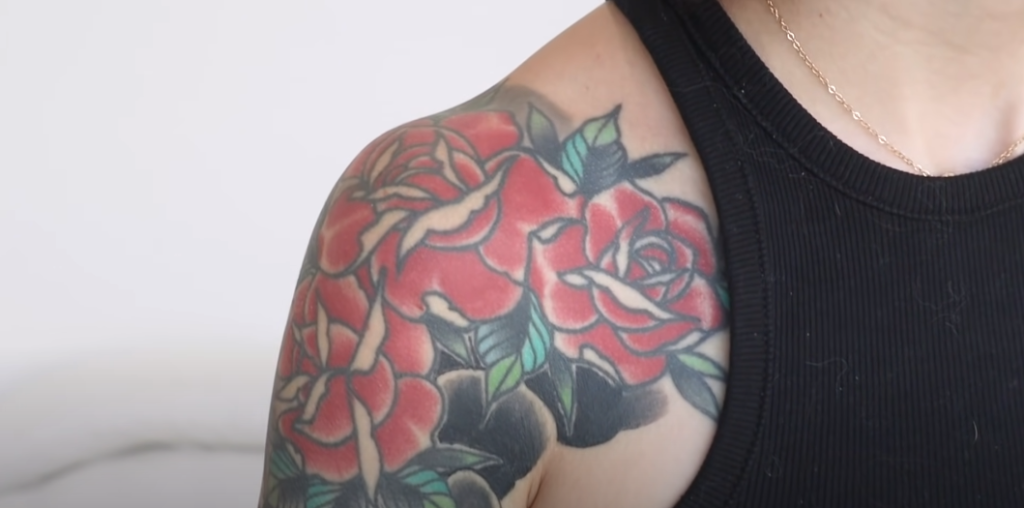
Avoid being inked in a part of your body that gets lots of direct sunlight as well – the sun can really speed up the aging process and lead to faster discoloration.
Tattoo ink used
Another thing to consider is the type of ink that was used for your tattoo. There are a variety of different choices when it comes to this and if you’re not happy with how faded or discolored your design looks then going back to speak with the artist may be an option.
Tattoos fade over time no matter what but switching from one brand/type of ink to another can make all the difference between having something done by a good artist who knows what he’s doing and getting stuck with someone who doesn’t have much experience at all– plus, there’s nothing worse than having to go back for revisions!
Inexperienced tattoo artist
You should take into account that not all artists are created equal – some will do a better job than others and may add more vibrant colors or stronger shading in their drawings.
If your artist doesn’t have good ink skills then they’re probably not going to cause much damage when it comes to how faded your design ends up looking but you can still try and avoid this by researching reviews online before choosing an artist!
You don’t want someone with bad tattoos taking on new clients so make sure you look at their work carefully beforehand. The internet is a great place to start if you’re looking for reviews on different tattoo artists in your area.
Unprotected sun exposure
Contrary to popular belief, tattoos do not always require direct sunlight exposure in order to fade. In fact, the sun’s harmful UV rays can cause your tattoo ink pigment colors to change and even break down over time. Not only that but as the years go by you’re going to want a younger look which means covering up parts of it with makeup or even sunscreen.
Sunscreen can actually help prolong your tattoo’s life by protecting the colors from fading and prevent any type of infection with its SPF. Wearing it daily is preferred, but applying it before going out into direct sunlight for at least two hours should be enough time to absorb properly into the skin.
Poor aftercare regimen
The tattoo will fade faster if you do not take care of it properly. It is important to keep the area clean at all times by washing it with antibacterial soap or body wash that specifically says “for tattoos.” While showering, avoid using a loofah because this may irritate your skin too much. Tattoos are also more likely to fade in spots that are exposed directly to sunlight for long periods of time so try wearing sunscreen on those areas even after your tattoo has healed completely.
At night before going to bed, always apply moisturizer over the entire surface of your new tattoo since being dry can cause itching as well as fading. Neosporin ointment should be applied instead of moisturizer to help your tattoo heal faster.
Weight fluctuations
Losing or gaining weight can cause the ink on your tattoo to fade over time so it’s important that you think about this before getting inked. If you’re looking for a design on your stomach then losing some pounds is not too much of an issue.
However, if you want something on your legs or arms – which are smaller parts of the body for someone who isn’t very tall – then they may become stretched out and make the artwork look faded as well. This means no matter how hard you try to keep up with exercise routines and healthy diets, changes like these might make your tattoos appear discolored after years have passed by.
Skin conditions
Skin conditions like psoriasis and eczema that cause the skin to be dryer than normal which will make your tattoo fade faster. If you have any of these conditions it is best not to get a new tattoo until they are under control. This includes acne treatments with harsh chemicals because this might also lead to scarring in the area where your tattoo was done after several sessions if left untreated.
There are topical creams you can use for temporary relief but always consult your dermatologist before using them on sensitive areas! The same goes for tattoo stretch marks because scars don’t have a contract with ink.
The color of your skin will cause a lot of fading in tattoos over time. The more melanin you have will help protect it from fading faster, but darker-skinned people are still at risk for having their tattoos look faded with lots of sun exposure.
Other factors that can make your ink start to fade are:
- rubbing on certain areas where friction occurs (like under tight clothing or swimsuits);
- chemical reactions when exposed to water or chemicals (shampoo, soap, etc.);
- using tanning beds which is very bad for tattoos because they break down the pigment making them look patchy or faded in just one session;
Summing up, tattoo wearing off is a natural process. One of the main reasons why tattoos fade over time is because they are exposed to sunlight and other elements that can damage your skin, such as pollution or chemicals in tap water. Many people experience problems with their tattoos when traveling abroad where sun exposure is higher than at home – especially if you’ve never been there before! Another reason for tattoo fading could be poor aftercare – so make sure you know how to look after your fresh makeup forever friends.
Fixing a Faded Tattoo
If you have a faded or old tattoo, it might be time to look into ways on how to fix a faded tattoo. Fortunately, for those who are looking for ways on how to fix a faded tattoo, many options out there can help improve the condition of your tattoos and make them look as good as new again.
When thinking about what methods would work best with your needs here is some insight from people who have tried these methods before:
- One of the ways to fix a faded tattoo is by using an anti-fade cream. This cream helps restore color and vibrancy back into your tattoos while protecting them from more damage too. In addition to just bringing back color though, some of these creams can also help improve skin texture as well which makes them even more helpful;
- Some experts claim that TCA peels work since they are good not only for getting rid of old scars but also for fading older tattoos too without any pain or discomfort. This method is also very safe and effective since they only use a low concentration of TCA at 15%;
- Dermabrasion is another method to try. It basically involves sanding down your skin in order to make it smoother, brighter, and softer like when you were younger! While doing so though will remove some layers of outer skin along with old tattoos to making them harder to see but then allowing new ones to become clearer instead;
- Also, consider using laser therapy that penetrates the skin and breaks down old ink particles into smaller pieces, making them easier for your body to remove. This method is very effective but should only be used after consulting with an experienced professional first though;
- PRP injections can be also helpful if you want to fix a faded tattoo. These involve drawing some blood from other parts of your body before spinning it in order break up those existing red blood cells so that you can then inject that into any area where you want something new or improved such as looking younger again;
Be mindful though, each person is different so what might work great with someone else may not do anything at all for your unique needs. For example, if dermabrasion doesn’t work well for someone they could always go with microdermabrasion instead which has shown even better results than before.
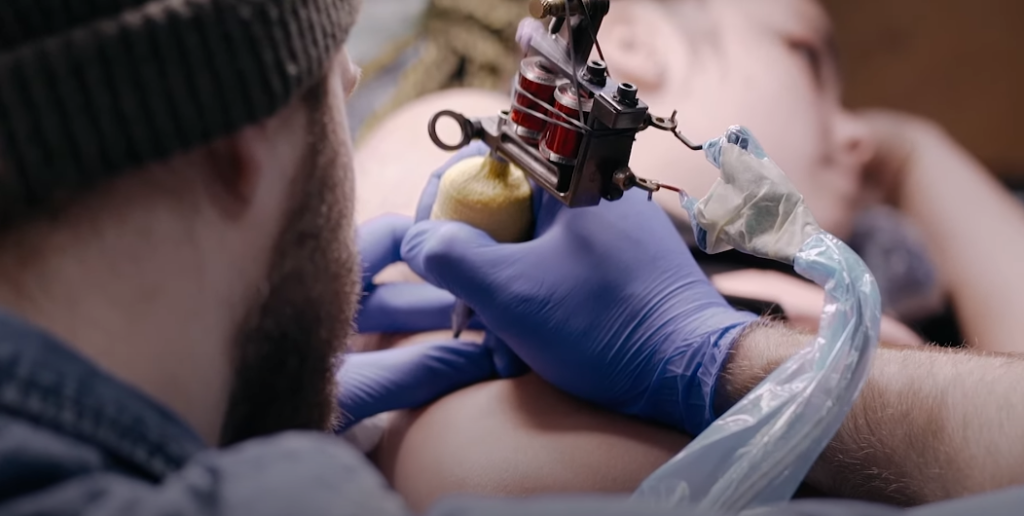
It never hurts to keep trying new things out and seeing what ends up working best but either way, remember that these are just some suggestions from other people who have been where you are now before.
FAQ
Are tattoos supposed to look faded when healing?
It’s possible that your tattoo is suffering from a condition known as “blowouts”. Blowouts occur when the ink spreads under the skin and causes parts of it to blend.
Some other factors can cause blowouts:
- If you decide to get another piece done before your first tattoo has healed completely;
- Tattooing over scar tissue or stretch marks;
- Getting tattoos on areas where there isn’t enough flesh for adequate healing (e.g., too thin);
- Not using proper aftercare instructions (applying lotion regularly);
- Blowouts can be prevented by taking proper care of your tattoo, but sometimes the ink may still spread;
Why does my tattoo look faded after 3 days?
After a tattoo is finished many people will notice that the colors of their tattoo look faded. This can be frustrating and disappointing for those who wanted to display it proudly after receiving such an important piece of body art. However, if you understand why your tattoos fade – before you get one – there are things you could do to make sure this never happens again:
- After a week, your tattoo may start looking faded. Your skin type affects how long it will take to heal and fade. If you have oily skin then it can cause the ink to be absorbed faster. If you do not care for it properly this could lead to fading while healing;
- How much time did your artist spend applying the stencil? Many artists are trying out new techniques with machines that allow them to apply tattoos in 20% less time than before. However, if they rush through an application process like this – or any other method during application – this greatly increases your chance of getting poor quality work that leads directly to having a faded tattoo sooner rather than later. Be sure to look at their portfolio ahead of time to see if they have good quality work;
- How long did the artist take to apply your tattoo? Depending on how big it is, it can range from 45 minutes up to several hours!
- If you are promised a fast application process but receive something that looks rushed or incomplete then this will affect your chance of having an amazing piece of art permanently placed on your skin for life that leads directly to having faded tattoos. Do not let anyone rush through this process with you – and make sure the colors look vibrant before letting them start;
- Did you pick a color that will fade quickly? There are many variables to this such as the ink composition and how it was applied. However, there is something called “transference” which means your skin can absorb some of the pigments from the tattoo into your body over time – causing light spots where the tattoos used to be! If you know ahead of time that certain colors always tend to fade faster than you may consider going with black or gray instead. These two colors seem to last longer – especially on those who have oily skin – making them a perfect choice for getting a tattoo in the first place!
Why do black tattoos turn gray?
The ink of a black tattoo usually contains iron oxide, which is what gives it its color. The reason tattoos fade over time and turn gray has to do with the way your body absorbs this pigment, as well as how fast your cells regenerate. Since new skin replaces old skin on an ongoing basis throughout our lives, that means older skin doesn’t contain nearly as much blood flow or active melanocytes (cells in the epidermis that produce pigments such as melanin). This can cause faded-looking tattoos — also known scientifically by their technical name: “hypopigmented macules”.
Why do black tattoos turn green?
Many people are left wondering why their tattoos have faded to an unnatural green color. Usually, the cause of this is ink being broken down by light, chemicals, or even time itself. The key thing here is that it is not your body reacting in a negative way to the tattooed pigment and destroying it over time; instead, pigments themselves can be broken down by other elements that lead to them losing saturation and fading away completely.
Another reason could be because you actually don’t want black but rather gray or dark blue so what looks like black might just be very dark colors tricking your brain into seeing something else entirely!
What tattoo color fades the fastest?
Different tattoo colors fade at different rates. Colors that have more black pigment tend to last longer because the ink is absorbed into the skin instead of being dissolved by your body’s immune system.
Any color with a high amount of yellow in it will fade faster than other colors, but red tends to be one of the most prominent colors to disappear after time has passed on your fresh new tattoo! Tattoos are permanent and you should make sure you trust yourself enough for them not to come off before getting one done, especially if they cover big pieces of real estate like an arm or leg!
Do tattoos look thicker when healing?
A tattoo that is healing may appear to be thicker than it actually is due to the swelling of your skin. Fluid accumulating in the tissue surrounding your tattoo causes swelling. Because of swelling, you may notice that your colors are duller and less vibrant than they were when your tattoo was fresh.
Where do tattoos last the longest?
- The parts of your body that have more natural oil glands, such as the chest and back;
- The parts of your body that have thicker skin, such as the shoulder blades and thighs;
- Tattoos applied to areas with less sun exposure usually last longer because there is less fading;
What happens if you get your tattoo wet?
The short answer is that it can damage your tattoo. The longer answer depends on what type of water you’re talking about and how long the exposure was for. Waterproof sunscreen or lotion can also be hazardous, so make sure to wash off thoroughly before touching your skin again.
Be aware that water-resistant sunscreen does not protect as well against UVA rays, which are equally harmful but harder to block out with SPF alone.
What is the deal with tattoo skincare?
Tattoo skin care consists of 2 main things:
- First of all, you must make sure that your hands are clean before touching your fresh ink! Any bacteria on them can potentially cause infection to enter into the wound site if it meets open flesh;
- Next, wash off any residue or dirt from your new tattoo at least twice a day until it heals completely. It’s important not to scrub too hard during this process because doing so could irritate and damage the already sensitive cells inside the dermis layer where pigment has just been injected by needles for permanent ink placement;
How can you maintain your tattoo to keep it looking fresh?
One way is by keeping your skin moisturized with ointment or lotion for the first few days after you get a new piece inked on. After this period has passed, using a sunscreen every day when exposed to UV rays will help preserve color and definition in tattoos. Avoiding saltwater or chlorine pools while swimming is also good practice to use if wanting long-lasting results from being tatted!
Showering should be done twice daily during weeks following the procedure as well because toxins that form under the skin may cause infection which means redness around the area where the procedure was conducted along with pain or discomfort.
Mild redness around the tattoo is common, but should not last more than a few days after getting inked!
If there are signs of infection to appear on your skin within this time frame it’s important to seek immediate medical attention because you may be facing an allergic reaction towards certain chemicals used during application which can cause pain and swelling along with itching while rashes develop all over the body.


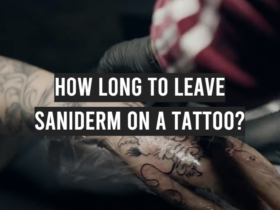
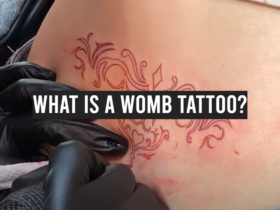

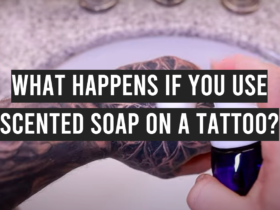
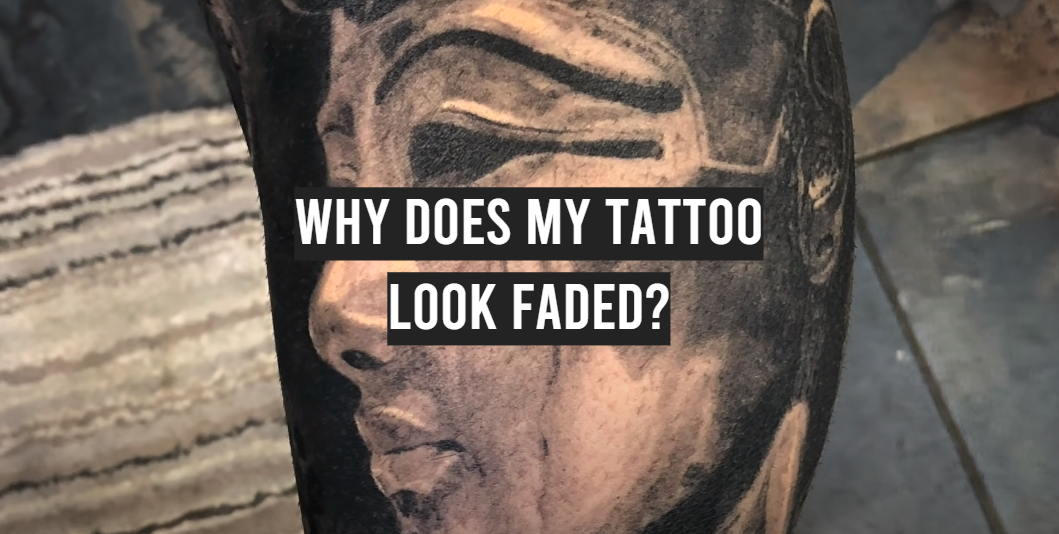

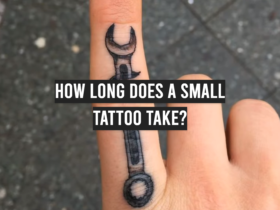
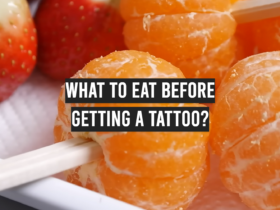
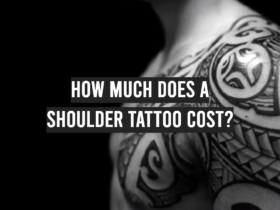
Leave a Review